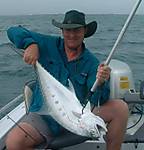I'm still new at working with aircraft kits and I need some advice from the experienced modelers. I use Tamiya extra thin cement.. and when I try to cement the two halves of the fuselage.. by the time I brush the cement all around.. the spot where I started from becomes dry.. so, do you guys usually use the thick type of cement, or do you use the thin cement but with capillary action method.. like holding the two halves together then touching the brush to the seam to let the cement run along the length of the fuselage... assuming that would even work??
Anyway, I'm just trying to see what the more experienced modelers have found to be better.. or more practical.
Thank you
Hisham
Start Here (for Beginners)
This forum is for younger modelers or people just starting out in the hobby.
This forum is for younger modelers or people just starting out in the hobby.
Hosted by Jim Starkweather
Advice needed on cementing fuselage
Hisham

Joined: July 23, 2004
KitMaker: 6,856 posts
AeroScale: 77 posts

Posted: Friday, July 22, 2011 - 11:16 AM UTC

Jessie_C


Joined: September 03, 2009
KitMaker: 6,965 posts
AeroScale: 6,247 posts

Posted: Friday, July 22, 2011 - 11:39 AM UTC
It's always best to use thin cement and let it run along the seam by capilary action. You get the joint completely filled, the cement doesn't get a chance to dry, it's a stronger joint afterwards, and you'll use less filler, not to mention less cement.

SellSword

Joined: February 15, 2010
KitMaker: 167 posts
AeroScale: 141 posts

Posted: Friday, July 22, 2011 - 04:19 PM UTC
http://aeroscale.kitmaker.net/forums/111677&page=1
Check out the forum thread on "reading the seam". I just got back into the hobby a little over a year ago and had the same kind of questions. Back when I was a kid we all used the Testors tube cement, but now I have at least 3 different liquid cements, CA, clear parts, and plain old Elmers school glue in my arsenal! I agree with Jessie on letting capillary action do the work, but I also don't try to glue both halves completely together in one go. I will usually start at the nose of my aircraft, i first align the halves together and apply 1-2cm segment of cement. Before it has a chance to set I make my minor adjustments to fit and then let the cement do it's job. I proceed like this around the entire seam. It takes longer than putting glue around the whole thing and slapping the sides together, but it will save you tons of time later because you wont have to do so much ( if any) filling and sanding! Just beware of planes that are supposed to have a seam along the belly or spine, I goofed on my first try at a Bf 109 and had to re-engrave the detail that I destroyed!
Check out the forum thread on "reading the seam". I just got back into the hobby a little over a year ago and had the same kind of questions. Back when I was a kid we all used the Testors tube cement, but now I have at least 3 different liquid cements, CA, clear parts, and plain old Elmers school glue in my arsenal! I agree with Jessie on letting capillary action do the work, but I also don't try to glue both halves completely together in one go. I will usually start at the nose of my aircraft, i first align the halves together and apply 1-2cm segment of cement. Before it has a chance to set I make my minor adjustments to fit and then let the cement do it's job. I proceed like this around the entire seam. It takes longer than putting glue around the whole thing and slapping the sides together, but it will save you tons of time later because you wont have to do so much ( if any) filling and sanding! Just beware of planes that are supposed to have a seam along the belly or spine, I goofed on my first try at a Bf 109 and had to re-engrave the detail that I destroyed!
Posted: Friday, July 22, 2011 - 04:33 PM UTC
I agree with Jessie and Ray, I use Tamiya Extra Thin cement and the capillary technique, and a small section at a time.
Cheers, D
Cheers, D
Hisham

Joined: July 23, 2004
KitMaker: 6,856 posts
AeroScale: 77 posts

Posted: Friday, July 22, 2011 - 09:49 PM UTC
Thanks a lot for your responses, guys... very helpful
And, Ray, thanks a lot for sharing the link to that thread.. I learned a lot just from reading the first page.
Hisham
And, Ray, thanks a lot for sharing the link to that thread.. I learned a lot just from reading the first page.
Hisham

SellSword

Joined: February 15, 2010
KitMaker: 167 posts
AeroScale: 141 posts

Posted: Saturday, July 23, 2011 - 05:29 AM UTC
No worries Hisham! You can't imagine the wealth of knowledge you can find here in the forums and how fast your skills will improve. There's also not a stranger among the people who make up the Network, so feel free to chat and ask questions. I would suggest joining a campaign that interests you. It's one of the best ways to get to know everybody, it's a great motivator, and also great practice for your new skills! Maybe I'll see you sometime on a campaign build... 'til then have fun reading seams!
 |










